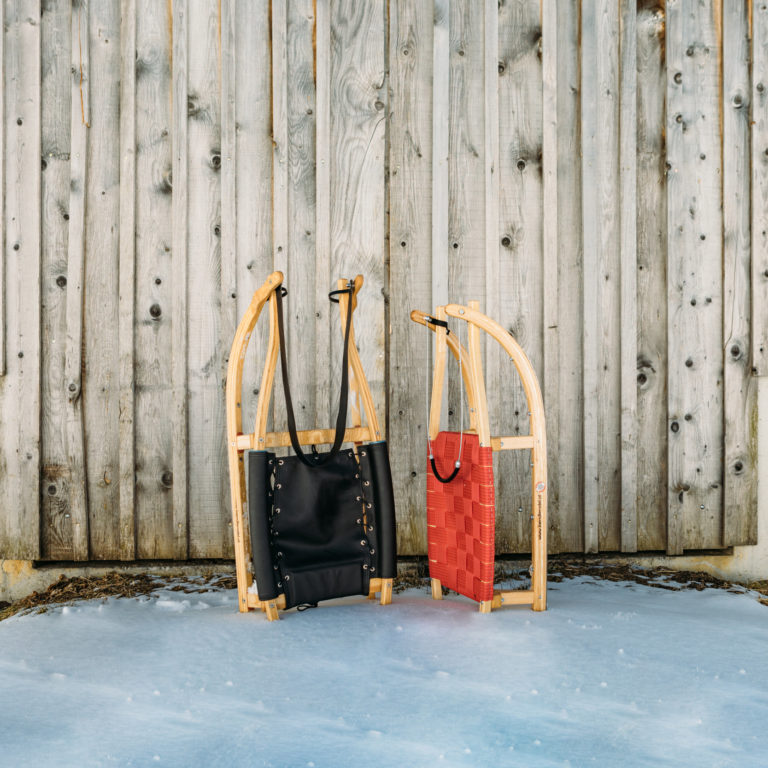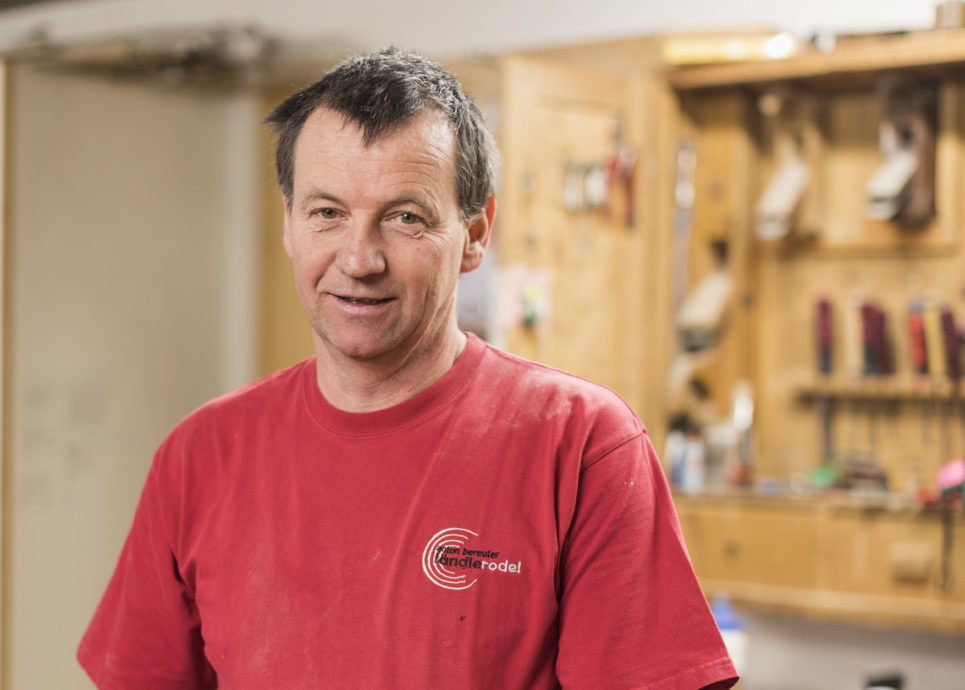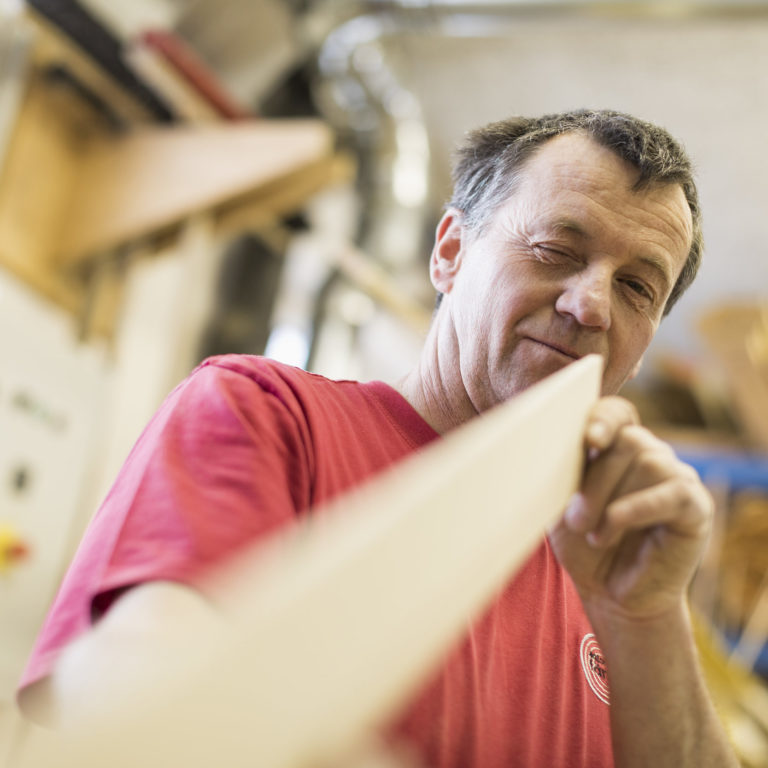


Anton Bereuter has built his dream toboggan – and now everybody wants one

C Tischlermeister Anton Bereuter © Darko Todorovic / Vorarlberg Tourismus
Master carpenter Anton Bereuter has built his dream toboggan
When winter arrives in Vorarlberg and the first snow starts to fall, that’s when you’ll find master carpenter Anton Bereuter busy building his special toboggans. We visited him in his workshop in Alberschwende and asked him what makes his toboggans so special.
TEXT: ANNE SCHÜSSLER
It’s going to get loud now. Better put your earplugs in,” says Anton warning us. The circular saw starts moving with a loud screech. Anton pushes curved, glued wooden boards over the rotatingblade and cuts them into two halves. Wood dust whirls through the air, it smells strongly of freshly cut wood.
Anton Bereuter is a master carpenter and joiner in Alberschwende in the Bregenzerwald – and the inventor and builder of the Ländlerodel. He starts his mass production, so to speak, as soon as the snow begins to fall. Word has spread about the quality of his toboggans. What makes a good toboggan? “The mobility, the sloping, curved runners – and, of course, the Austrian mark of quality,” says Anton. It all started small with Anton’s own passion for tobogganing. He established his company ‘Handwerkholz’ in 1998. And began work on his Ländlerodel to satisfy his own needs. But in 2006, he decided to sell the fun and sports toboggans he was making. Vorarlberg would now not be the same without them and the locals have started to affectionately call them ‘The Ländle’.
I tinkered with my own toboggan for 15 years. Now it’s perfect.
“I make between 200 and 300 toboggans a season. It takes between three and four hours to complete one,” he says. Almost every step is done by hand. “It all starts with good wood. I only use ash. It’s the most flexible and doesn’t break that easy,” he says. The wood is dried first. He then cuts very precise strips from the wood on the circular saw. He glues seven strips together to make the two runners for one toboggan. He then places the glued strips into a gluing press that was made especially for him. This is where the wood is bent into the shape of the runners. A Ländlerodel is made from around 60 individual parts.
The 51-year-old already starts making the individual parts in batches throughout the year, between his other carpentry and joinery work, which helps him manage the rush in winter. He then assembles them in winter. It’s not only the quality that’s important to Anton, where his materials come from also matters. “The wood is sourced from local forests and all accessories, such as the straps and flat sheets of material, are produced by companies in the region,” he says. “Products made here in Vorarlberg possess a quality that’s unique. I couldn’t imagine doing my job anywhere else.” Which means that the Ländlerodel has Vorarlberg running through its veins – as has its creator.
Products made here in Vorarlberg possess a quality that’s unique. I couldn’t imagine doing my job anywhere else.
He’s almost finished the toboggan he’s working on. He uses the pneumatic stapler to attach red straps that will later form the seat to the frame. “That’s where, for example, the fun and sports toboggans differ,” he says. The fun ones have seats woven from red straps while the sports ones have a lower seat made from a flat sheet or leather. Anton occasionally likes to have some fun on his own toboggan after work. He prefers the sports toboggan. “Once you’ve been on that one, you don’t want to use anything else. It’s an entirely different feeling.”
The toboggans are available for purchase…
…directly from Anton’s workshop and the Werkraum Bregenzerwald in Andelsbuch, where he’s a member, as well as from sports outlets across the region.